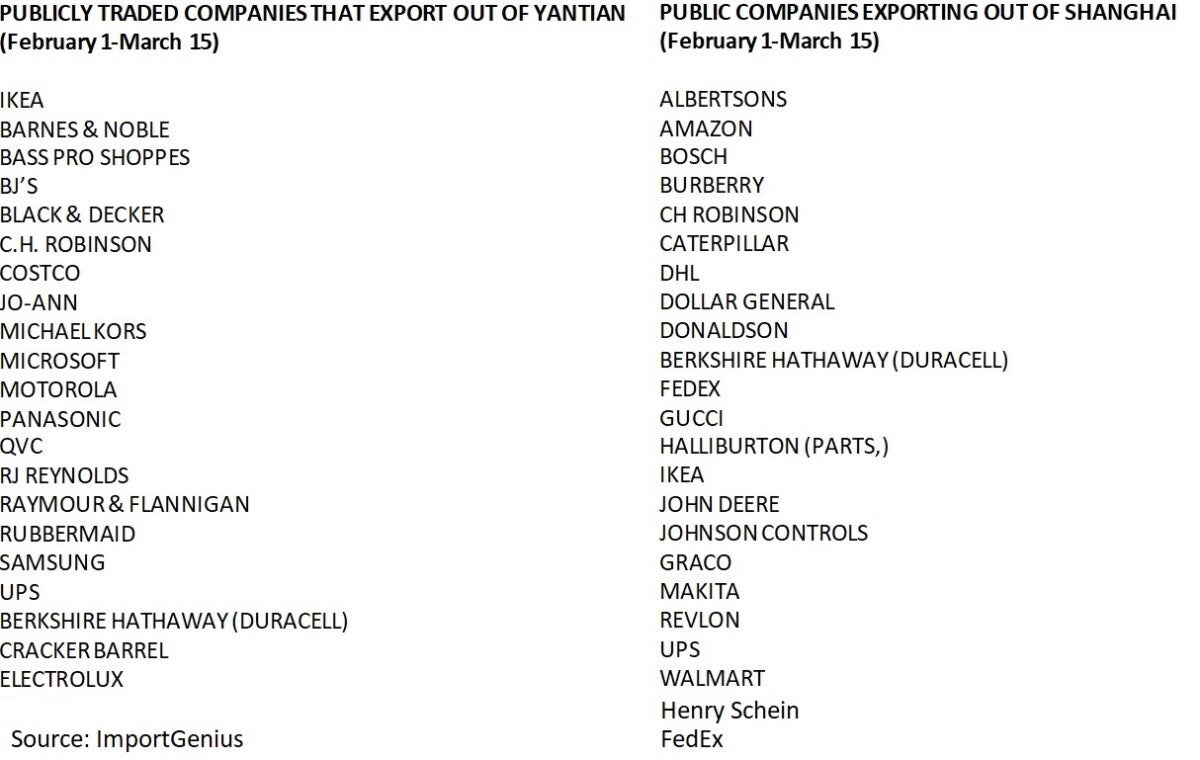The ports of Shanghai and Yantian are known as two of the largest electronics export hubs in the world, but if you look in the containers, you will find much more than that.
Using ImportGenius, American Shipper analyzed the bills of lading of Chinese exports leaving those ports bound for the United States since Feb. 1 to see what variety of items are manufactured and exported from those specific regions.
In addition to televisions and other electronic goods, the 5,958 containers processed — 3,006 originating in Shanghai; 2,952 in Yantian — were filled with everything from Tempur-Pedic electric mattresses, home and office furniture, batteries, toys, firepits, and clothing to Christmas trees, flooring, lighting, truck and auto parts, home decor, and even Amazon chassis.
Importers listed on the bills of lading ranged from the nation’s largest retailers and Amazon third-party sellers to 3PLs transporting products on behalf of companies like Home Depot, Lowe’s and Restoration Hardware.
“50% of our ocean freight out of these two ports are non-electronic products,” explained Terry Unrein, COO of the Americas for Seko Logistics. “The products exported out of these ports are important for the entire U.S. supply chain.”
This snapshot compiled by the bills of lading research provides some much-needed insight into just how many sectors of product originate out of those two ports, which are currently being impacted by China’s zero-COVID lockdown.

Lifesaving medical devices are also made in the Shenzhen and Shanghai regions and are exported from Yantian and Shanghai. A total of 23,824 cartons of medical devices and products were exported out of the Port of Yantian during the time frame analyzed. From the Port of Shanghai, 89,315 packages of medical products were exported.
“This issue isn’t going away. Our members have reported persistent delays, as the backlog of medical supply containers awaiting delivery has increased by 13% since January,” explained Matt Rowan of Health Industry Distributors Association. “Approximately 9,000 to 14,000 containers are currently delayed.”
The closure of the factories in these regions and the zero-COVID restrictions and quarantines were a subject of concern at the Port of Los Angeles’ recent monthly press conference.
“South China business is important to us. It represents a third of our cargo,” explained Gene Seroka, executive director of the Port of Los Angeles. “ The severity of the impact is based on how bad the outbreak is and how long the closure would be.
‘You need to keep in mind the impact of these factory closures will not be felt immediately but for weeks to come. We have to watch the recovery and how quickly they [the Chinese factories] can pick up on orders and ongoing orders.”
So while Apple and smart-TV brands are making the COVID-impact headlines, it’s apparent that lots of other items in your household besides the ones you have to plug in or charge may have originated from one of those ports.







